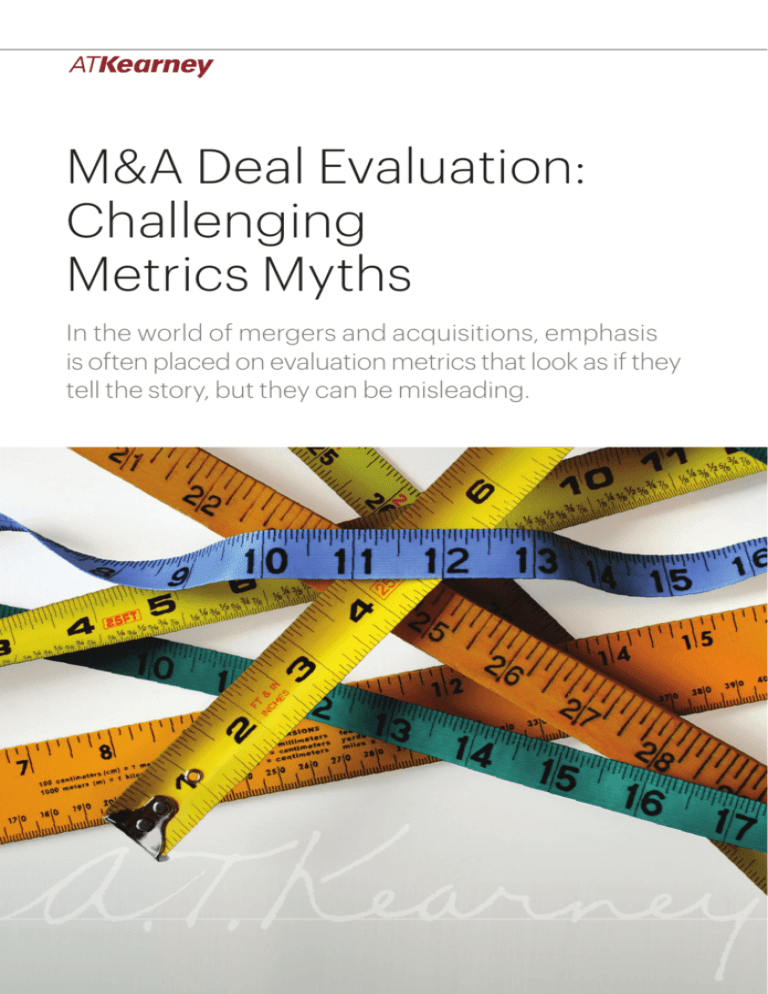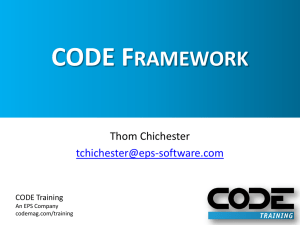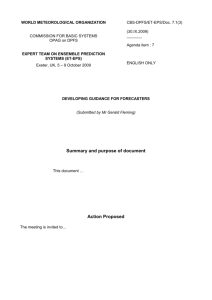
M&A Deal Evaluation:
Challenging
Metrics Myths
In the world of mergers and acquisitions, emphasis
is often placed on evaluation metrics that look as if they
tell the story, but they can be misleading.
M&A Deal Evaluation: Challenging Metrics Myths
1
The presentation was over. The CEO of a global business-services group had been part of a due
diligence process to advise on whether or not to proceed with a major European acquisition.
Our job was to help the CEO and the board answer some important questions: Was the target
company a good fit? How did synergies stack up against the risks? Did the target company’s
sector show potential for growth?
Our findings were less than encouraging. They suggested limited growth going forward, and
even though the potential for synergies was good, the risks were significant, and there were
doubts about the company’s ability to deliver those synergies.
As we walked out of the meeting, the CEO was digesting all that he had just heard and contemplating the board’s likely reaction to our findings. Then he spoke: “Well, there’s one thing we can
say about this acquisition—it’s highly earnings accretive.”
An argument to support the myth
that EPS accretion equates to value
creation is that “some people believe
it does”—a misperception that
is then priced into the stock.
What does that mean? Does the fact that a deal is accretive necessarily mean that it’s a good
move? Conversely, are deals that dilute earnings per share (EPS) necessarily bad moves?
Should we even use EPS as a measure by which to evaluate an M&A transaction?
In this paper, we discuss findings from our research into the metrics and analyses most frequently
used to evaluate proposed mergers and acquisitions. The research introduced a surprising
insight: The impact on EPS is by far the most emphasized metric used to evaluate proposed
M&A transactions between public companies.
With this in mind, we look at two common and related myths surrounding EPS and demonstrate
why these are at best unhelpful and at worst potentially misleading. We also examine what
business leaders and market analysts should focus on instead. As always, our advice is pragmatic:
Stick to the business fundamentals.
How Do They Get It So Wrong?
It is widely recognized that a significant percentage of M&A transactions fail to deliver value
to shareholders. What goes wrong? How is it that acquisitions on average seem to create
negligible returns? It can be tempting to blame poor merger integration for the meager returns,
and certainly the execution of an integration can have a major impact on whether or not
a transaction is regarded as successful. However, it may also be useful to consider if the deal
was worth doing in the first place. Maybe some transactions should never have happened.
With this in mind. A.T. Kearney joined forces with the UK’s Investor Relations Society (IR Society)
to understand exactly which metrics and analyses get the most emphasis in evaluating proposed
M&A Deal Evaluation: Challenging Metrics Myths
2
M&A transactions. Maybe the solution to the question of “what goes wrong” lies in the tools used
to filter (and one would hope eliminate) value-destroying transactions from those that create value.
Investor Relations professionals were surveyed to gauge the views of key stakeholders—
company executives, sell-side analysts, and investors—on 10 frequently used metrics and
analyses (see sidebar: M&A Metrics—Why the Difference in Emphasis? on page 4). We found
that EPS analysis is used most, and by a wide margin: 75 percent of respondents ranked it in the
“strong emphasis” category, fully 26 percent ahead of enterprise value/EBITDA, the number two
rated metric (see figure 1).
Figure 1
EPS accretion/dilution analysis is given the most emphasis in evaluating proposed
M&A transactions
All stakeholders
(% respondents)
Strong emphasis
33%
49%
29%
29%
Some emphasis
27%
No emphasis
25%
22%
Don’t know
20%
45%
75%
41%
49%
47%
53%
53%
57%
65%
39%
45%
16%
22%
6%
2%
2%
EPS
accretion/
dilution
6%
Enterprise
value/
EBITDA
20%
8%
2%
Price
earnings
ratio (P/E)
10%
Debt ratio
analyses
4%
2%
DCF
valuation
2%
Price/book
value
22%
4%
Cultural fit
assessment
8%
16%
10%
10%
Cost of
capital
analysis
Core
capabilities
assessment
22%
6%
Enterprise
value/
revenues
Note: Stakeholders include company executives, sell-side analysts, and investors; EPS is earnings-per-share; DCF is discounted cash flow.
Source: A.T. Kearney and Investor Relations Society, 2013
What Exactly Is EPS Accretion and EPS Dilution?
Before we go any further, let’s define what we mean by EPS accretion and EPS dilution.
A company’s EPS—again, earnings per share—is simply the total profit allocated to each
outstanding share.
EPS growth can be achieved either organically on inorganically through M&A activity, and few
would argue that organic EPS growth is anything other than a positive indicator. EPS growth
delivered through M&A activity, that is, EPS accretion, is fundamentally different. Yet there
M&A Deal Evaluation: Challenging Metrics Myths
3
are some commonly held beliefs—or, more accurately, myths—to suggest this distinction is not
fully understood by many experienced investment professionals, including some company
executives (see sidebar: The Lingering Myth of EPS Accretion on page 8).1
Two myths are widely believed:
• EPS accretive transactions create value.
• EPS dilutive transactions destroy value.
As we will see, neither of these preconceptions stands up to scrutiny. Why then do so many
executives and others persist in using EPS analysis to evaluate M&A transactions?
M&A Metrics: Why the Difference in Emphasis?
To learn how different stakeholder groups view earningsper-share (EPS) analysis as a
metric for evaluating mergers
and acquisitions, members of the
UK-based Investor Relations
Society were surveyed regarding
the emphasis that key stakeholders (company executives,
sell-side analysts, and investors)
give to 10 frequently used
metrics and analyses. All stakeholders have “skin in the game”
but, as it turns out, significantly
different perspectives on the
extent to which they emphasize
EPS analysis. The biggest
contrast was among those
who strongly emphasize EPS—
company executives (59 percent)
and investors (88 percent).
Sell-side analysts were in the
middle at 76 percent (see figure).
Perhaps these results are not so
surprising. Company executives
are likely to take a more allencompassing, or perhaps more
strategic, view of a merger’s
impact. But should that be the
case? Shouldn’t all parties be
striving for the same objective
assessment of a deal’s benefits
and the extent to which it will
strengthen competitive position
and ultimately, generate shareholder value through increased
cash flow?
This raises an interesting
question: Which group is more
correct? Our answer is that while
company executives place
significantly less emphasis on
EPS analysis, all three groups pay
far more attention to the metric
than it merits.
Figure
How much emphasis is given to EPS accretion or dilution analysis in evaluating
proposed M&A transactions?
Strong emphasis
Some emphasis
No emphasis
59%
76%
41%
18%
6%
Company
executives
Sell-side
analysts
88%
Don’t know
6%
6%
Investors
Source: A.T. Kearney and Investor Relations Society, 2013
Not all M&A transactions grow EPS. Some transactions reduce EPS, resulting in EPS dilution.
1
M&A Deal Evaluation: Challenging Metrics Myths
4
The answer comes down to views about valuation. A company’s stock is frequently valued on
the basis of its EPS by applying a price-to-earnings (P/E) ratio. Based on the assumption that
an acquiring company’s P/E ratio will stay the same after an acquisition, if earnings per share
increase, then the company’s overall value will increase, ostensibly as a result of the deal.
What’s the Catch?
But, there’s a catch. To understand it you need to consider the fundamentals of why one
company has a higher P/E ratio than another in the first place. It is because the market believes
the earnings of the company with the higher P/E ratio—call it Company A—will rise faster than
those of the company with a lower P/E ratio (Company B).2 Now suppose Company A buys
Company B, using its stock as the acquisition currency. As a result of the purchase the EPS of
the combined company will be higher than that of Company A had it not made the acquisition—
thus the transaction is EPS accretive for Company A.
They call it the “bootstrap game.”
If companies can fool investors by buying
a company with lower P/E rated stocks,
then why not continue to do so?
But being EPS accretive comes with a downside—and that’s the catch. The newly combined
company will also have a lower earnings growth rate than Company A would have had as a
standalone company. So while the EPS of the post-acquisition company will be higher than
that of the pre-acquisition Company A, its P/E ratio will be lower due to its acquisition of the
lower-P/E rated Company B.
In fact, the reduction in the P/E ratio, all other things being equal, will exactly counterbalance
the impact of the higher EPS. The result is that the valuation of the newly combined company
will reflect the blended higher EPS and lower P/E ratio of the two original companies. In other
words, no value is created.
A key reason for doing an M&A deal is, of course, the synergies that can result. By increasing
the new entity’s combined earnings, synergies can add enough value to make the combined
company worth more than the two individual companies were before the merger. It is important
to note that the increased value results from the synergies created, not from the deal being EPS
accretive or dilutive. It is quite possible that highly dilutive deals offer the greatest opportunities
for delivering synergies.
An argument sometimes put forward to support the myth that EPS accretion equates to value
creation is that “people believe it does.” This becomes reality as the misperception is priced
into the stock.
Alternatively, it believes that earnings are more sustainable than the earnings in the lower-rated company. This paper adheres
to the idea that earnings will grow faster in the company with the higher P/E ratio. In reality, the two ideas relate to the same thing—
the strength of the earnings stream a company generates.
2
M&A Deal Evaluation: Challenging Metrics Myths
5
Richard A. Brealey and Stewart C. Myers write about this idea in their seminal textbook, Principles
of Corporate Finance. They call it the “bootstrap game.” If companies can fool investors by buying
a company with lower P/E rated stocks, then why not continue to do so? The flaw in the bootstrap
game is the need to keep the market fooled, hoping it doesn’t notice that the acquiring company’s
earnings growth potential is becoming progressively more diluted.
The inevitable result of pursuing such a strategy to its logical conclusion by continuing to acquire
lower P/E rated companies is clear: In the same way a Ponzi scheme must eventually fail due
to the lack of underlying value creation, the P/E multiple of the acquiring company must fall
as it becomes increasingly evident to the market that no value is created.
What’s the Alternative for Evaluating Proposed Mergers?
Our advice for evaluating a proposed merger is characteristically pragmatic: Stick to the fundamentals. M&A can deliver significant competitive advantage and value to shareholders, but the
criteria by which to assess just how much must answer fundamental business questions:
• Is the proposed merger strategically logical?
• Will it deliver cost, revenue, or other financial synergies?
• Will it build management or other capabilities?
• Is the combined company capable of delivering the synergies?
A thorough, fact-based due diligence is the best way to answer these questions (see figure 2).
Figure 2
Transaction due diligence overview
To understand the business
fundamentals of a proposed deal
Strategic
options
Commercial
due diligence
Operational
due diligence
Financial
due diligence
Cost structures
and drivers
Operational
improvement
potential
Cost synergies
assessment
Integration
capabilities
Risks and opportunities
• Review financial
statements and
management
accounts
• Basis for future
business plans
• Valuation
• Deal financing
• Target liabilities
and potential risks
• Competition
authority
implications
• Transaction
mechanics,
execution, and
closing
• CFO
• Accountants
• Input from
commercial and
operational due
diligence
• Company general
counsel
• Legal advisors
Activities
and
analysis
• Market dynamics
• High-level trends
• Business portfolio
analysis
• Target identification
•
• Market and
customer
attractiveness
•
and dynamics
• Industry structure
•
and dynamics
• Competitive
•
position
• Distribution
channel dynamics •
• Top-line opportunities
• Business plan review
• Risks and opportunities
Typical
parties
involved
• Senior managers
(CEO, board)
• Strategic advisors
(consultants,
bankers)
• Senior management
(CEO, strategy director, business
development director)
• Consultants
Legal
due diligence
Fact-based
assessment
of value
creation
potential
Source: A.T. Kearney analysis
M&A Deal Evaluation: Challenging Metrics Myths
6
Accretion or dilution is a fact of
doing deals, but is not a measure
of potential value creation.
For that, you need to examine
the deal’s business fundamentals.
Of course, there is also a role for using many of the M&A metrics and analyses described in
figure 1 as part of an overall assessment. These can play a complementary role in developing
a full perspective on a transaction. Used in isolation, however, and without a clear understanding
of their limitations, they have a tendency to give a very limited view of the real potential for
value creation.
Ultimately, any value an M&A transaction creates must translate into future cash flow, resulting
from synergies in three value-creation areas: topline growth, operations productivity, and asset
and capital investment rationalizations (see figure 3).3
Figure 3
Merger synergies originate from three value creation areas
Typical opportunity areas
Top-line growth,
commercial
optimization
Merger
synergies
Operations
productivity
improvement
Asset and capital
investment
rationalization
•
•
•
•
•
•
•
Cross selling
Product development and innovation
Brand portfolio optimization
Price realization and service offer
Combined innovation pipeline
Leverage sales capabilities
(Dis-synergies: customer retention)
• Operations and supply chain
— Manufacturing footprint
— Warehouse and logistics footprint
• Procurement
— Price leveling
— Volume consolidation
— Strategic sourcing
— Procurement transformation
• SG&A
— Office consolidation
— Finance, HR, IT consolidation
— Sales and marketing cost reduction
— Leverage capabilities and best practice
• Capital investment rationalization
• Working capital reduction
• Sale of rationalised assets
Typical synergy value
Net 2-3%
of combined
sales year one
10-15%
of combined
cost base
10-15%
excluding
asset sales
Source: A.T. Kearney Merger Integration Framework
The synergies ultimately delivered in a merger are influenced by a number of factors, including the transaction’s strategic goals
and the proportion of total spend that is addressable for synergy purposes.
3
M&A Deal Evaluation: Challenging Metrics Myths
7
The Lingering Myth of EPS Accretion
In an examination of 30 acquisitions performed and announced
by publicly owned companies,
68 percent referred to the
merger’s potential impact on
EPS.4 The prominence given to
this metric at the announcement
reinforces the lingering belief that
EPS is a proxy for value creation.
The EPS accretion myth has
lingered for a long time. Here’s
why. At first glance, EPS accretion appears to be a simple, and
therefore appealing, way to
determine or communicate
whether or not a transaction will
create value. In fact, it is logically
and mathematically flawed.
Large mergers and acquisitions
almost always involve the high
drama of risk and reward for the
parties involved. M&A can
make—or break—an executive’s
reputation or career, and
multimillion-dollar fees and
bonuses can be won or lost.
Given all that, no wonder every
possible argument supporting
M&A deals is applied by those
trying to make them happen.
This is precisely why analysts and
other stakeholders need accurate
evaluation tools: to make sure all
the arguments for making the deal
hold water. Despite the frequency
with which EPS accretion is
alluded to or used to bolster
arguments for the deal, the metric
doesn’t stand up to scrutiny.
And then there’s the crucial question of how much to pay for a deal and who will realize the
value it creates. If the net present value (NPV) of future synergies is paid to the selling shareholders in an acquisition price premium, even the most synergistic of mergers can result in
value destruction for the acquirer’s shareholders.5 Always consider who will be the winners
in an M&A transaction—the final outcome is rarely the same for all parties.
EPS Myths Revisited
The moral of the story is this: Too often, too much emphasis is placed on whether a deal is EPS
accretive or dilutive. These are time-honored metrics that appear sensible but in reality do not
answer the most important question: Should we do the deal? Let’s review the two commonly
held myths and why they don’t work as M&A evaluation measures.
EPS-accretive transactions create value. Not necessarily. Accretion is a relative measure that
simply shows the company being acquired has a lower P/E rated stock.
EPS-dilutive transactions are value destroying. Again, not necessarily. In fact, EPS-dilutive
transactions can increase value when the target company has good growth potential and the
strategic logic for the deal is strong.
The fact is that EPS analysis is not a useful tool for evaluating the merits of proposed M&A
transactions. Accretion or dilution is a fact of doing deals but is not a measure of potential value
creation. For that, you need to examine the deal’s business fundamentals.
Our research reveals one more insight: how the emphasis given to the different metrics and
analyses has changed over the past decade. Two measures, core capabilities and cultural fit,
Companies were randomly selected from a group of transactions in which the acquiring company was U.S.- or UK-based and the transaction satisfied a set of criteria, including deal value of more than $1billion and 100 percent of the target was acquired.
The examination included a review of press releases and transcripts of press conferences where the acquirer announced the deal.
4
The acquisition price premium is typically 20 to 30 percent over the pre-announcement trading price, although this premium
is perceived to have fallen in recent years.
5
M&A Deal Evaluation: Challenging Metrics Myths
8
the most qualitative among the 10 examined, are among the top measures that have “become
more important” in the past decade (see figure 4). This suggests stakeholders are becoming
increasingly aware of the conditions necessary for merged organizations to deliver sustained
value after the deal has closed and the merger integration process begins.
Figure 4
How has the relative importance of each metric and analysis changed over the past 10 years?
More important
Net change inperceived importance
+50%
+44%
+44%
+31%
+31%
+13%
Unchanged
Less important
+6%
-6%
-13%
13%
13%
13%
Don’t know
-19%
6%
31%
50%
44%
44%
44%
44%
56%
38%
25%
38%
38%
31%
13%
19%
Core
Cultural fit
capabilities assessment
assessment
19%
Enterprise
value/
EBITDA
13%
Cost of
capital
analysis
56%
69%
25%
13%
25%
50%
19%
19%
25%
25%
6%
19%
Debt ratio
analyses
13%
13%
13%
13%
13%
EPS
accretion/
dilution
DCF
valuation
Price
earnings
ratio (P/E)
Enterprise
value/
revenues
Price/book
value
Note: EPS is earnings-per-share; DCF is discounted cash flow
Source: A.T. Kearney and Investor Relations Society, 2013
Quick and Easy Shortcuts Can Be Misleading
This is not to say a proposed transaction’s impact on EPS isn’t important. It is something that
needs to be understood and communicated to investors. The fact remains, however, that doing
an EPS-accretive deal is easy—simply buy a company with a lower-P/E rated stock than your
own. So the next time someone says or implies that an M&A deal is a good one because it is EPS
accretive, ask them why the market gave the target company’s stock a lower rating in the first
place. To truly understand whether a proposed acquisition will create value requires evaluating
the strategic rationale for making the deal, and if it will deliver enough synergies to create value.
As with many things in life, quick and easy answers can be misleading.
M&A Deal Evaluation: Challenging Metrics Myths
9
Authors
Philip Dunne, partner, London
philip.dunne@atkearney.com
Angus Hodgson, principal, London
angus.hodgson@atkearney.com
The authors wish to thank their colleagues Oliver Lawson and Olga Wittig and the Investor Relations Society for their
support in the preparation of this paper. The IR Society is the professional body for those involved in investor relations
and the focal point for investor relations in the United Kingdom. For more information, visit www.irs.org.uk.
M&A Deal Evaluation: Challenging Metrics Myths 10
A.T. Kearney is a global team of forward-thinking, collaborative partners that delivers
immediate, meaningful results and long-term transformative advantage to clients.
Since 1926, we have been trusted advisors on CEO-agenda issues to the world’s
leading organizations across all major industries and sectors. A.T. Kearney’s offices
are located in major business centers in 39 countries.
Americas
Atlanta
Calgary
Chicago
Dallas
Detroit
Houston
Mexico City
New York
San Francisco
São Paulo
Toronto
Washington, D.C.
Europe
Amsterdam
Berlin
Brussels
Bucharest
Budapest
Copenhagen
Düsseldorf
Frankfurt
Helsinki
Istanbul
Kiev
Lisbon
Ljubljana
London
Madrid
Milan
Moscow
Munich
Oslo
Paris
Prague
Rome
Stockholm
Stuttgart
Vienna
Warsaw
Zurich
Asia Pacific
Bangkok
Beijing
Hong Kong
Jakarta
Kuala Lumpur
Melbourne
Mumbai
New Delhi
Seoul
Shanghai
Singapore
Sydney
Tokyo
Middle East
and Africa
Abu Dhabi
Dubai
Johannesburg
Manama
Riyadh
For more information, permission to reprint or translate this work, and all other correspondence,
please email: insight@atkearney.com.
A.T. Kearney Korea LLC is a separate and
independent legal entity operating under
the A.T. Kearney name in Korea.
© 2013, A.T. Kearney, Inc. All rights reserved.
The signature of our namesake and founder, Andrew Thomas Kearney, on the cover of this
document represents our pledge to live the values he instilled in our firm and uphold his
commitment to ensuring “essential rightness” in all that we do.





